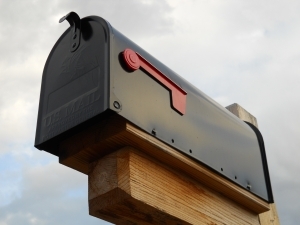Twenty years ago, in the United States, the US government estimated that about 380,000 people living in the United States had autism. Today, it’s reported there are more than 500,000 US individuals, under the age of twenty-one, who have a form of autism, and that number is predicted to grow.
Autism is a developmental disability which means kids with autism develop skills differently than most other kids. People are born with autism and have it all their lives, but they can learn, grow and be successful, in-spite of the disability. Take for example, Temple Grandin, an accomplished author, professor and scientist. HBO created a movie on her life and she has written books on the topic of autism, my favorite being, “The Way I See It”, her personal look at autism and aspergers.
Children with autism may have difficulties with communicating and social skills. Some kids with autism can’t speak, so they learn to use computers or a board with pictures on it to tell people what they want or how they feel.
In my teaching career, I’ve worked with children on both ends of the spectrum. Children who speak with above average ability to children who rock their bodies back and forth, flick their fingers or flap their arms.
There are tips for working with children with autism that teachers can follow in an inclusive setting. Some of these tips may be helpful to the new teacher, with little experience working with this disability, to the new parent of an autistic child.
Tips for working with your student or child:
1. BE CONSISTENT
Children with autism perform best when provided with an environment they are familiar and comfortable with.
2. BE POSITIVE
Catch the child being good, and tell them! Be fun, form a relationship with the child you are working with and focus on increasing appropriate behaviors through positive reinforcement.
3. USE VISUAL AIDS
In general, children with autism are visual learners and benefit from instruction that is given auditorially and visually. Show while you tell. Avoid lengthy verbal directions. Use Mayor-Johnson symbols (click this link to see what these symbols are: Mayor-Johnson symbols) photographs, written or pictorial schedules whenever possible. When teaching an autistic child in the classroom, I’d list the assignments on the white board and number the sequence, a type of check list if you will, and this actually helped all the kids in class! I would also write the check list on a post it pad and attach it to the child’s desk.
4. MODIFY
Any environment, any situation can become a “teachable moment”. The student you’re working with may not be able to participate in all class activities, however, there is always something that can be worked on and the lesson needs to be adapted and differentiated for the child. Modify what the student is doing in any way that will enable him or her to participate to the maximum extent possible (adapt the length of the lesson, the content, the activity itself).
5. PREPARE
Show and tell the student what is coming next and provide time for the child to process what is happening, especially in unusual situations. For example, I had a child who would get extremely agitated to the point of hopping, screaming and flapping his arms if there was a sudden surprise to the day’s schedule (like having a fire drill). This would cause his classmates to giggle, point, and tease which would add to the chaos. I notified the principal and was allowed to always be notified before any lock down drill or fire drill was planned. That way, I could talk to the child ahead of time so when the drill took place, it wouldn’t “spook” him. He actually enjoyed the knowledge that he and I were the keepers of this very special “big secret.”
6. GUIDE
Use gestural or physical prompts. Try to avoid a lot of verbal directions as the students tend to become dependent on it. Use the least restrictive prompt needed to get the student to perform the desired behavior. Watch what the other children are doing and encourage the student to do the same.
7. SHADOW
Fade back whenever you can. The goal is for the student to achieve independence in the inclusive environment. Be available but not overbearing. Guide the student to follow his or her peers rather than relying on you.
8. BE FIRM
Once you give a direction, expect the student to follow it. After one or two times, use a gestural or physical prompt as needed. Provide clear cut feedback and consequences as needed to help the student increase appropriate behavior and decrease inappropriate behavior.
9. MODEL
Avoid asking a lot of questions. Instead, model appropriate speech, i.e. “I’m done” or “Look”. Model what to do in social situations, games, behavior, etc.
10. GIVE CHOICES
This is critical! It encourages independence and ownership of activities, and can also be a very effective way to diffuse power struggles. “It’s time to clean up. Do you want to clean up the blocks or the legos?”
GREAT BOOKS ABOUT AUTISM FOR CHILDREN:
Joey and Sam: “A Heartwarming Storybook About Autism, a Family, and a Brother’s Love” by Illana Katz and Edward, M.D Ritvo
Kristy and the Secret of Susan( Baby Sitter’s Club) by Ann M. Martin
Russell is Extra Special by Charles A., III Amenta
Please Don’t Say Hello by Phyllis-Terri Gold
GREAT BOOKS FOR THE PARENT OR EDUCATOR:
Ten Things Every Child with Autism Wishes You Knew by Ellen Notbohm
101 Great Ideas for Teaching and Raising Children With Autism or Aspergers by Ellen Notbohm and Veronica Zysk
Positive Life Skills: From Communication and Safety to Self Esteem and More by Chantal Sicile-Kira
Adolescents on the Autism Spectrum: A Parent’s Guide to the Cognitive, Social, Physical and Transition Needs of Teenagers with Autism Spectrum Disorders by Chantal Sicile-Kira and Temple Grandin




